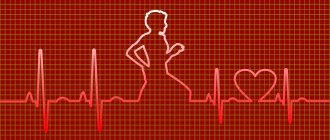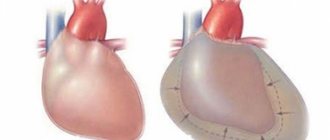Diseases of the cardiovascular system around the world are only increasing every year. This is especially true for hypertension, as the most common pathology of organs associated with blood flow. Constantly high blood pressure occurs in humans for several reasons. Excess weight, bad habits, increased pace of life, emotional distress and regular stress are factors that lead to surges in blood pressure even in middle age. And in people over 65 years of age, hypertension occurs 2-3 times more often.
There are special programs for the treatment of high blood pressure depending on the patient’s age, phase and degree of hypertension (arterial hypertension). But, unfortunately, drug treatment is always associated with a toxic effect on the body. Experienced doctors suggest physical activity as a preventive measure and an effective method of healing. Such activity is most useful and safe in an aquatic environment, that is, in a swimming pool.
The benefits of swimming for hypertensive patients
An important point is the horizontal position of a person while swimming. This makes it easier for the heart to push blood throughout the body. The water in the pool protects you from sudden movements, but at the same time forces you to work in order to stay afloat. Thus, blood circulation becomes more intense and the elasticity of blood vessels returns.
When you regularly swim in the pool, rhythmic movements of your arms and legs make your heart pump more smoothly. The muscles of the “main motor” are strengthened, and the volume of blood expelled per push increases. Doctors clearly recorded a decrease in both indicators of average daily blood pressure in hypertensive patients by 12-16 mmHg with regular swimming in the pool for several weeks.
Physical activity in arterial hypertension
“Movement replaces many medications, but not a single medicine in the world can replace movement.”
A. Musset
The results of various observations show that in people leading a sedentary lifestyle, i.e. Those who are practically untrained have a 20-50% higher risk of developing arterial hypertension compared to those who lead a more active lifestyle and perform significant muscle loads.
In practically healthy people, physical activity reduces blood pressure by an average of 10 mmHg. Therefore, physical exercise should be used as a non-drug method for the treatment and prevention of arterial hypertension.
The effect of physical activity on the body:
- Blood pressure decreases;
- The contractile function of the myocardium improves;
- The number of heart contractions decreases;
- Vasospasm is reduced;
- Reserve capillaries open;
- Cholesterol decreases;
- The body's defenses are stimulated;
- Mental activity is stimulated;
- Sleep improves;
- Irritability and anxiety decrease;
- Calories are burned, weight is reduced;
- Improves appearance.
In middle-aged and elderly people, in most cases not completely healthy, motor function must be dosed, like any other treatment. The individualized exercise program is safe and enjoyable. Therefore, they require medical supervision. In young people, such control may be minimal (physical examination).
Types of motor modes.
- A gentle regimen includes muscle relaxation and simple gymnastic exercises.
- Gentle training mode:
- walking from slow to fast;
- cyclic gymnastic exercises;
- dosed loads on an exercise bike.
- Training mode.
- fast walking;
- jogging;
- exercise on an exercise bike for up to 30 minutes;
- swimming;
- rowing;
- skiing;
- cyclic gymnastic exercises.
The training effect of physical activity on the activity of the cardiovascular system is optimal for a duration of 20-40 minutes 3-4 times a week or 60 minutes 2 times a week.
Types of physical activity recommended
with arterial hypertension.
- Rhythmic gymnastics classes;
- Jogging;
- Bike;
- Swimming;
- Fast walk;
- Cross-country skiing.
Ball games such as football, volleyball, basketball, tennis and intense gardening are also beneficial, but the effect of these types of movement on stabilizing blood pressure is less pronounced.
The most important training rules.
- Gradual increase in strength and duration of training.
- Regularity of classes.
- Load level control.
The level of physical activity is monitored by heart rate and breathing.
Pulse rate is a reliable indicator of whether the load corresponds to a person’s condition. Normal heart rate is 60-80 beats per minute. It is necessary to measure your pulse at rest, then after dosed physical activity. It is allowed to increase the heart rate by half of the original one.
During activities (running, walking, etc.), you should strive to feel a slight shortness of breath. At the same time, the ability to speak must be preserved. If shortness of breath goes away within 5-10 minutes after stopping the exercise, then this increase is considered satisfactory. If increased breathing persists for more than 10 minutes, this indicates that the load does not correspond to the state of health.
Increased daily activity.
- Walk daily on level ground at a moderate pace for 30-60 minutes.
- Start regular health-improving physical education classes.
- If possible, go swimming.
- You should like exercises and workouts; you need to choose your favorite type of load and exercise.
- We need to find like-minded people to study together.
Let's start carefully, step by step and gradually!
It must be remembered that any violations of a healthy lifestyle (bad habits, poor nutrition, insufficient sleep) can negate the positive effects of physical activity.
Losing body weight while swimming
First of all, the aquatic environment reduces the weight of any person. In obese people, most often suffering from hypertension, the musculoskeletal system, especially the joints, is unloaded. Active movement in an elastic water environment helps burn extra calories.
Thus, exercises in the pool are useful due to their versatility for all ages of people suffering from hypertension. If the degree of the disease is not critical and your treating doctor does not mind, visit the pool regularly. The results will not take long to arrive. Swimming products can be purchased in our store.
14 Apr 2021
How about just swimming?
Just swimming in the same pool is also good. “Swimming is a very useful sport, because in the process, not only, for example, legs develop, as when a person just runs. There is a very active workout here, during which the back muscles develop, and the arm muscles are well used. Swimming is becoming a unique type of physical activity, but still, sometimes it’s not always possible to do it,” says Evgeniy Achkasov.
Regular swimming is a good option for strengthening the muscle corset in general. But the main difference between therapeutic swimming and regular swimming is that the former is always performed strictly as prescribed and strictly under the supervision of a specialist, since control and dosing of loads is required.
The benefits of swimming for blood pressure
Swimming classes provide an opportunity to improve health for people of any physical shape. Stress is transferred to the body much more easily because the force of gravity in water is less than in air. Swimming exercises have a positive effect on the cardiac system: blood circulation improves, heart rate normalizes, and blood pressure drops. Swimming in the pool affects the central nervous system: a person becomes calmer, more attentive, and problems with sleep stop. Swimming is one of the best methods for preventing viral diseases, since being in water adapts the human body to the negative effects of temperature changes.
In water, there is no vertical stress on the spine that a person experiences while walking. The body, while in water, uses autochthonous muscles that hardly function every day. This leads to alignment of posture and strengthening of the back, the spine becomes more flexible, and the muscles are stretched. When a person swims, his inhalation becomes uniform and long, not only the chest is used, but also the diaphragm. This helps to expand the lung tissue and strengthen it. The functional activity of the lungs increases, the blood is enriched with oxygen and fills every cell of the body with it. This prevents hypoxia (oxygen starvation).
Swimming and obesity treatment
Treatment of obesity with the energy value of nutrition in the pool
As a result, swimming training takes place in a mode that is gentle on the spine and heart, but quite difficult on the muscles. Water has a massaging and pressing effect on the skin and subcutaneous tissue, the skin is forced to thicken and strengthen. Simultaneously with deep hydration and under the influence of increased blood flow (not only in the muscles, but also in the capillary network of the skin), toxins are washed out of the skin.
When exercising in a pool, water temperature is important. Water removes heat much better than air, and during swimming, energy is spent not only on movement itself, but also on maintaining the usual body temperature
That is, capillary blood flow in the skin increases, it is constantly “warmed up”. But the water cools it again, as a result, hot blood from the internal organs is pumped into the capillaries more and more intensively, stimulating blood flow, and fat reserves begin to be destroyed in order to provide the body with the necessary energy. Adipose tissue itself serves the body as a “thermal insulator”, so if the water is constantly too cold, then the body is forced to retain the “fat layer”. Warm water does not have this effect. Therefore, swimming for the treatment of obesity is preferably in moderately warm or cool water, but in no case cold or hot water. You should not freeze or bask in a warm pool.
Obese people usually float quite well. True, there is an exception - people who have been overweight since childhood have a very dense and heavy skeleton, formed to “carry” a heavy body; they have negative buoyancy, like thin swimmers. The second exception is that if excess weight is caused by swelling of adipose tissue, buoyancy is also low. In these cases, swimming as such is not always available, but water aerobics, as with grade 2-4 obesity, will be very relevant. In addition to the fact that muscular work is performed - in conditions of weightlessness, but with noticeable resistance of water to movement, the resulting currents massage the skin. It tightens, becomes denser, “holds” adipose tissue better, and when losing weight it easily shrinks, which will eliminate the future occurrence of flabby folds of “excess” skin.
Thus, swimming is one of the excellent opportunities not only to speed up the treatment of obesity, but also to achieve a high cosmetic effect and improve the health of the heart and joints. Swimming is very useful for preventing obesity and after recovery.
Obesity and its causes
Obesityphysical activity
Physical inactivity, that is, low mobility, ensures a positive energy balance when more energy comes from food than is expended. Since a negative balance is always a threat to life, and the body, especially accustomed to irregular exercise and unsystematic nutrition, constantly expects stress, the “excess” energy is stored as a reserve in adipose tissue. Therefore, irrational and irregular nutrition, strict diets alternating with periods of “eating” and sudden fitness loads for a week or two are factors that increase the risk, and their elimination is, in fact, the prevention of obesity. Genetic predisposition also increases the risk of obesity.
Effectiveness of swimming for patients with hypertension
Drug treatment does not always bring the desired result for high blood pressure. People are hypersensitive to many drugs; with frequent use, the patient may develop side effects or complications in the form of heart attacks and strokes. The disease affects a huge part of the world's population and not everyone is suitable for treatment with drugs. In this case, therapeutic exercises come to the rescue, one of the forms of which is swimming.
Among all types of physical activity, this sport is the most effective. And there is an explanation for this. Not everyone can perform many strenuous sports exercises. Since hypertension is more common in older people, sports are difficult for them. Swimming eliminates heavy strain on the muscles. And the benefits of this sport are enormous.
Contraindications to swimming with high blood pressure
If the condition worsens and the pressure level increases (over 140/90 mm Hg), you should not go to training. If you see that deterioration occurs during exercise, you should consult with your doctor and instructor - perhaps you are overloading your body, performing the movements incorrectly, or there are problems with taking medications.
If you have not previously been swimming, and during swimming you develop symptoms:
- tachycardia;
- ringing in the ears;
- feelings of dizziness or pain;
- darkening in the eyes - you need to stop exercising and go to the first aid station.
Systematic swimming lessons have no contraindications for hypertensive patients. The patient can postpone a visit to the pool until his condition improves or reconsider the exercise if he feels a deterioration in health before or during the lesson
People with severe hypertension swim with great caution, under the supervision of an instructor, having previously lowered their blood pressure with antihypertensive medications.
Swimming is the best way to cope with the symptoms of hypertension through physical activity, reduce sensitivity to changes in natural pressure and alleviate severe stages of hypertension. Over the course of a month or two, hypertensive patients observe stabilization of pressure, strengthening of the body, and a decrease in susceptibility to viral diseases.
Pool technique
Regular swimming will bring benefits, but if you do not know the correct algorithm, there is a risk of physical injury. It is advisable to work with a personal trainer on your first visits to the pool to familiarize yourself in detail with the training methodology and the rules of breathing control.
For patients with hypertension, the backstroke technique with parallel strokes is recommended. The essence of the technique is alternating movements of the upper and lower extremities, inhalation and exhalation. In a supine position, the swimmer alternates hands in the water and lifts them to the level of the armpits, after which he extends them and pushes off with force. With this technique, the legs should alternately make short, jerky movements to maintain a stable horizontal body position.








